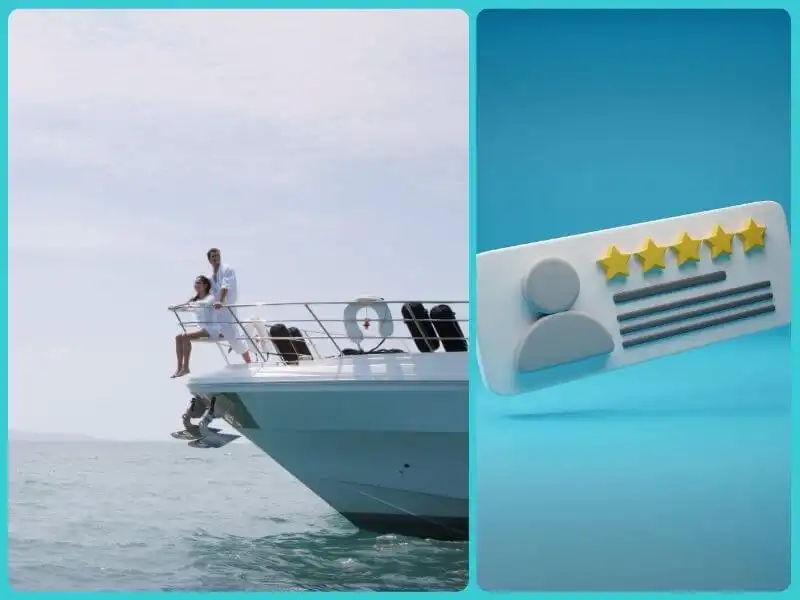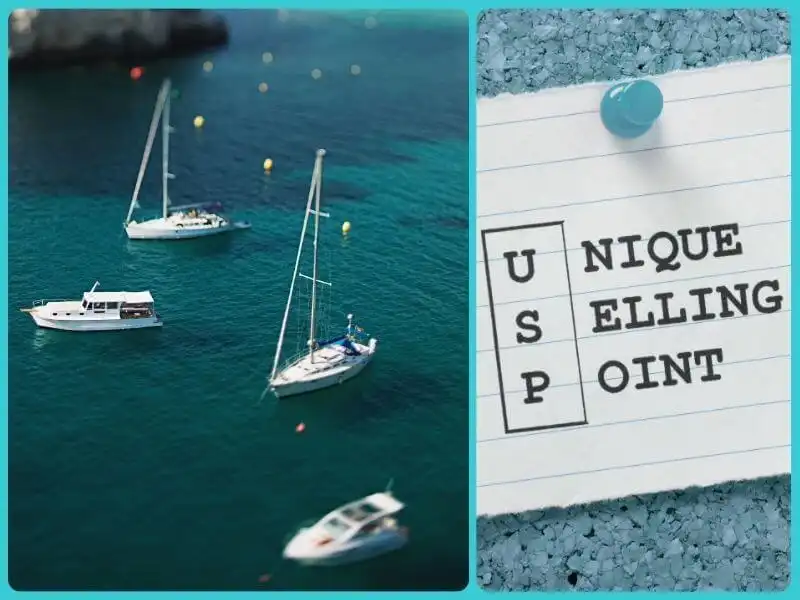
- 29.07.2024.
- News, Marketing, Management
No job is done well without an effective strategy, and digital marketing is no different. You must also know where you stand against your competitors. A thorough competitor analysis can reveal strengths and weaknesses in your approach. But it's also an opportunity for the growth of your own yacht charter company.
The first step in identifying your true competitors is looking beyond your own business niche. Your competition can be any website or any business competing for the same keywords.
If you run a yacht charter company, your direct competitors include other yacht charters.
Your indirect competition includes large booking websites, yacht brokers, travel platforms, popular forums, and social media pages.
For competitor analysis, gather detailed information about your competitors' operations, their fleet, exact locations, and pricing.
This process, also known as competitor profiling, helps you understand their business models and customer base.
With the use of SWOT analysis, you can evaluate a competitor's Strengths, Weaknesses, Opportunities, and Threats. This analysis helps you identify what competitors do well, where they fall short, and potential opportunities or threats they pose to your business.
Some examples of SWOT analysis of your competitors in yacht charter industry would be:
Strengths
- Competitive and budget-friendly pricing structures that attract a wide range of customers.
- Knowledge of the Croatian coastline and insider tips to enhance customer experience.
- It offers various yacht charter options and a diverse fleet, including bareboat and skippered, catering to different customer needs.
Weaknesses
- Limited amenities and onboard services compared to other yacht charters, which might not appeal to those looking for more comfort.
- Seasonal business relies heavily on the summer season, leading to potential cash flow issues during off-peak months.
Opportunities
- Creating attractive packages and promotions to attract more customers in the shoulder seasons.
- Using digital management tools and improving digital marketing to reach a broader audience.
Threats
- A growing number of yacht charters could erode market share.
- The economic instability could reduce the number of budget-conscious travellers.
Where is your online presence in your competitor analysis
A strong online presence is much needed for success in the yacht charter business. Evaluating your competitors' websites is a first step.
Look at their design and functionality. Is the website visually appealing? Is it easy to navigate?
A well-designed site with a user-friendly interface significantly impacts a potential guests' decision-making process. Also, look at the website's mobile responsiveness; many users will access it on their phones.
Next, examine your competitors' social media, their content strategies (if they have one) and audience engagement (if there is any).
Are they regularly posting good photos and videos of their fleet and yacht charter experiences? Do they engage with their audience by responding to comments and messages? Or are they not doing anything?
For your yacht charter business, if you use social media as intended (i.e. effectively), you can improve your visibility and create a loyal customer base.
You should also have a quality content strategy, and it should include the following:
- Photo galleries of yacht interiors and Croatian coast destinations
- Guests' testimonials and stories
- Behind-the-scenes videos of yacht maintenance and crew
- Interactive content like polls, contests, and Q&A
Good SEO and online advertising should support your online presence. Use tools like Google Search, SERanking, SEMrush and such, to see who leads the search results for key terms like "yacht charters in Croatia."
Analyze their use of keywords, meta descriptions, and backlink strategies.
They are probably running Google Ads or social media campaigns. But are they effective? Where can you differentiate?

Learn about your competition from their own guests and their reviews
There is no more genuine reflection of a company than its customer or client feedback. In the case of your competitors, it can show their strengths and weaknesses.
Start by collecting and analyzing competitor reviews on Google Reviews and social media platforms. Pay attention to patterns in the feedback.
Customer feedback reveals information about service quality. Are customers consistently praising the yachts' cleanliness, the crew's professionalism, or the ease of booking? Or are there recurring complaints about communication issues or unmet expectations?
You can use this information to enhance your own reputation. For instance, if competitors are frequently criticized for poor communication, focus on providing excellent customer service and proactive communication.
If customers rave about something specific, such as impeccable yacht maintenance, linen, or welcome gifts, incorporate similar (or even better) features into your own offer.

Unique Selling Propositions (USPs)
Identifying what makes your competitors unique is the best way to develop your own USPs.
Examine their marketing materials and strategies, reviews, and services to pinpoint unique features that set them apart.
What are they known for?
Now, craft your own USP and identify what makes your yacht charter stand out. Focus on what will resonate with your audience and align with your brand values.
The next step is clearly communicating your USP, i.e., your strengths, to attract and retain potential guests.
Use your website, social media, and advertising campaigns to show your USPs to the world, i.e. your followers and target audience.
Highlight that USP on your website, in your social media, newsletters, blog posts, and promotional materials - therefore, everywhere.

Strengthen your yacht charter company and set up for growth
Whatever you find in your competitor analysis should primarily serve you to better understand your market position. So, after you gather data, such as competitors' pricing models, service quality, digital presence, and customer feedback – you must identify patterns and areas where your business excels or falls short.
Competitor analysis is not for copying what your competition is doing but to better your yacht charter company.
If your digital presence lags, invest in a website overhaul, targeted SEO or other strategies such as:
- Adjusting pricing to offer better value
- Introducing new, in-demand services like themed charters
- Enhancing website design and functionality
- Launching targeted marketing campaigns
A competitive edge involves long-term strategies, continuous improvement, and innovation.
To stay ahead, stay updated with yacht charter industry trends, collect and analyze your own customer feedback, and adapt your offer accordingly.
Your options are actually huge. You can develop loyalty programs or invest in sustainable and eco-friendly practices.
Expand your fleet with diverse yacht types and build quality partnerships with local businesses if possible.
Or, of course, find something that no one has done before.
Need to strengthen your market position and ensure sustained growth?
Contact us and let us help you sustain your yacht charter business in the competitive market.
Subscribe to our newsletter to stay tuned to industry news.
Categories of trends
- News
- Sale
- Marketing
- SEO
- Web design
- Social media
- Technology
- Regulations
- Management
- Education
- Finances
- User experience
Newsletter
Sign up for the newsletter and receive the latest trends and tips straight to your inbox



